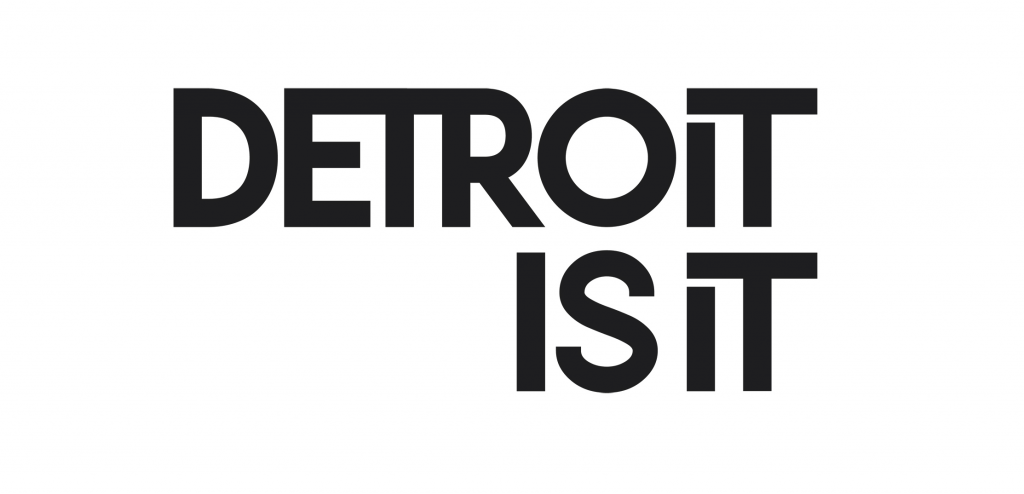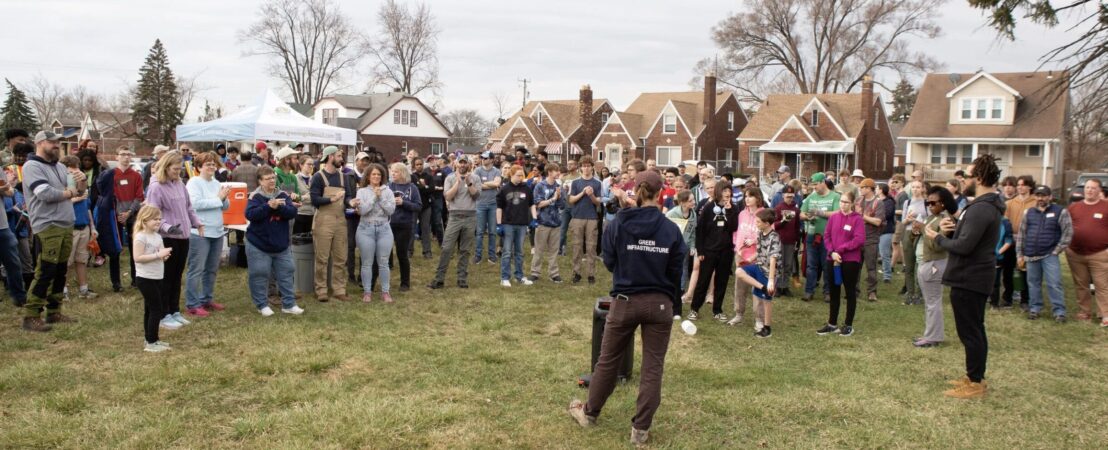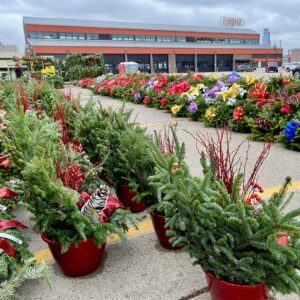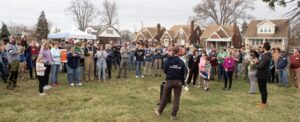On a fall morning, a group of residents, volunteers and Greening of Detroit staff members stand side by side on vacant block on Detroit’s east side. There are shovels, buckets, work gloves — and a sense of excitement. Each time a tree goes in the ground, it marks more than another sapling added to the city’s growing canopy. It marks an investment in the environment, the neighborhood and the people themselves. And it signals a new sense of pride and hope.
This year, The Greening of Detroit is reaching a landmark 177,000 trees planted since its founding. And for Vice President Monica Tabares, who has been with the organization for 25 years, that number carries a deeper meaning.
“It’s special to be part of an organization that transforms the landscape and lives,” she says. “Our work is immediate and enduring — you can plant trees on a block and instantly make it feel different. But what you don’t always see is the pride, skills, and confidence that also start growing.”

MONICA TABARES
Founded in 1989, The Greening of Detroit began with a focused mission to reforest a city devastated by Dutch elm disease. But over time, the organization evolved into something broader — and more powerful.
“We started as a tree-planting organization, and today, we’re an urban greening and workforce development organization deeply embedded in Detroit’s neighborhoods,” Tabares explains. “We restore tree canopy, educate youth across all Detroit schools, and train residents for meaningful careers in landscaping and forestry.”
Detroit’s tree canopy currently covers about 24% of the city, well below the national average for cities and suburbs. Decades of disinvestment, industrial pollution, and the loss of ash trees have left many neighborhoods hotter, more polluted, and lacking safe green spaces.
That’s why, for Tabares, tree planting is never just about beautification.
“Trees improve air quality, reduce stormwater runoff, lower energy costs, and provide shade in areas that experience some of the worst heat,” she says. “But they’re also about community revitalization and equity. Green lots create safe, healthy spaces where people can live and thrive. It’s an investment.”
Detroit has also faced the effects of increasingly severe storms — another reason urban greenery matters.
“Trees remediate stormwater and pollution. They literally change environmental outcomes. And when you look at equity — the neighborhoods that experienced the most disinvestment historically also face the highest pollution levels. Everyone deserves access to healthy, green, outdoor spaces. It’s basic to livelihood.”
One of the most impactful parts of The Greening of Detroit’s work is its Detroit Conservation Corps, a six-week training program preparing Detroiters – including returning citizens and those with limited job history – for roles in landscaping and forestry.
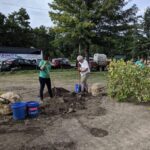
TREE PLANTING
“Many of our participants have faced barriers to employment,” Tabares says. “They’re looking for opportunity, and there is so much work to be done in this city. We train individuals as landscape technicians and forestry techs, and we connect them to employers. What starts as planting trees often becomes a pathway to a career.”
Just last week, the team celebrated its 71st cohort graduation.
“Several graduates stood up and said this work has changed their lives. Some never completed high school. Some didn’t think doors like this existed for them. But planting trees is a simple and rewarding act. You leave at the end of the day and there’s a forested block. And you realize you helped create it.”
Monica is especially passionate about generational learning. Her belief is that real change starts with young people.
The organization’s Tree Keepers Kids program brings environmental education directly into Detroit schools — helping students understand the purpose and benefits of trees, and how they can contribute to greener neighborhoods.
The Green Corps summer youth employment program — now 26 years old — hires teens aged 14–18 to maintain trees planted across the city.
“It’s more than a summer job,” she says. “We introduce students to career pathways and higher education opportunities in forestry, biology, soil science, conservation, fields many Black and brown students are never exposed to. We’ve had alumni go on to work for the U.S. Forest Service. That’s something we’re incredibly proud of.”
So how does The Greening of Detroit measure success?
“Yes, we track environmental impact,” Tabares says. “But what matters most is community engagement — how residents are involved in shaping their neighborhoods. And we see the social impact: people gain job skills, confidence, and pride. That pride spreads. That’s long-term stewardship.”

WORKFORCE DEVELOPMENT
Greening work in Detroit also comes with real challenges.
“Our work is scalable and there is so much more we can do, but funding sometimes determines that,” she says.
But Detroit’s geography provides a unique advantage: land.
“We have an abundance of vacant lots. They’re opportunities to keep land clean and green while development plans take shape. It’s almost a blank canvas. We realize some will be developed, but until then, we can plant trees, restore soil, and create healthier spaces.”
For Tabares, this is more than a job. It’s personal.
“I’m a native Detroiter. Being part of this work keeps me very connected to the city,” she says. “For 25 years, I’ve watched blocks transform. I’ve seen residents gain skills that open doors to meaningful careers. I’ve seen young people get their first spark of curiosity and think maybe this could be their future. That keeps me passionate.”
The Greening of Detroit may be approaching 177,000 trees, but perhaps the most enduring growth is harder to count: confidence, pride, stewardship, future careers, and a city redefining what its landscape can look like.
As Tabares puts it,
“Planting trees changes the view from your window. But it also changes people — sometimes when they need it most.”
As always, be sure to subscribe to our newsletter for regular updates on all things Detroit and more
